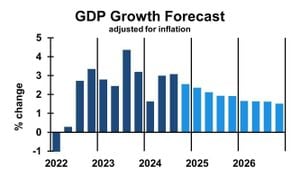Recent research has unveiled intriguing links between low-frequency tremor-like episodes and the catastrophic MW 7.8 earthquake which struck southeastern Türkiye on February 6, 2023. This study, conducted by multiple seismology experts, highlights the role of industrial activities, particularly those associated with cement production, as potential influencers of seismicity along the Narlı Fault area.
Utilizing advanced machine learning techniques, scientists analyzed seismic data from various monitoring stations over the years leading up to the disaster. Their focus was primarily on the months directly preceding the earthquake, during which time they observed significant activity of low-frequency seismic signals, detectable at frequencies between 1 and 5 Hz. These findings suggest not only the presence of natural tectonic processes but also hint at anthropogenic influences, particularly from nearby cement plants.
Understanding the conditions surrounding the Narlı Fault is pivotal, as this fault zone has been historically prone to seismic activity. Prior to the 2023 quake, elevated seismic activity marked the region for approximately eight months, raising concerns about the interactions between natural geological processes and human activities. Cement plants’ manufacturing processes involve substantial vibrations from quarry blasting, material extraction, and other machinery operations, all of which could contribute stress to surrounding fault lines.
The research highlights the significant advancements achieved through the application of machine learning to seismic data. The researchers employed deep neural networks to extract distinct patterns from spectrograms of continuous seismic signals, effectively clustering data to reveal spatial and temporal characteristics of tremor episodes. This sophisticated approach enabled them to differentiate between seismicity caused by natural tectonic processes and those associated with industrial activities.
Among their findings, the study notes, "signals emitted by cement plants, the detection of quarry-related blasts, and the geographical proximity to the Narlı Fault open the question of whether anthropogenic activities could have influenced stress loading along the fault." This statement reflects the broader concerns of how such practices might exacerbate seismic risks, possibly fostering larger tectonic events.
By analyzing the episodes of low-frequency tremors, researchers noted the emergence of distinct clusters of activity, particularly evident six months prior to the mainshock of the earthquake. These clusters indicated increased occurrences of episodes correlatively linked to industrial vibrations. This finding underlines the necessity of recognizing anthropogenic signals, as they can often be masked by significant natural seismic occurrences.
Study co-authors remarked on the importance of refining detection criteria for seismic monitoring, emphasizing the complexity of spatial distributions of seismic signatures. They stressed, "Our findings highlight the complexity of detecting non-tectonic signals within seismic records, which may include anthropogenic activities." The implication here is clear: without careful consideration of human-induced influences, the analysis of seismic data may yield misleading interpretations.
Through comprehensive documentation of many years of seismic activity, the researchers developed seismic event catalogs, including both naturally occurring earthquakes and those likely triggered by human activities. A distinct feature of this research was the identification of sets of signals whose magnitudes and frequencies corresponded to infrastructural undertakings, lending credence to the hypothesis of industrial activity-induced seismicity.
Researchers remain cautious, as the potential for direct links between human-induced changes and significant geological events requires more exhaustive studies. Although they emphasized multiple factors at play—both tectonic and anthropogenic—there is yet no definitive consensus on the impact of cement quarrying on the probabilistic assessment of seismic hazards.
While the immediate proximity of cement plant activities and the Narlı Fault warrants attention, the study tantalizingly suggests the possibility of future monitoring and modeling to quantify any effects industrial practices may have on fault mechanics.
Overall, this study illuminates the significance of non-tectonic signals within the seismic records, advocating for heightened awareness of human activities when assessing seismic risks. It also invites future explorations to clarify whether historical quarrying and industrial practices may be implicated not just as contributors to local seismicity, but also as potential precursors to larger seismic events, like the 2023 Kahramanmaraş earthquake.



